What Type of Wood for Fence Rails?
Whether you’re planning to install a wood fence for privacy, security or just to add beauty to your property, it’s important to choose the right wood. The type of wood used for your fence rails will determine how long it lasts, whether it needs to be treated or cleaned, and if it’s likely to rot in the environment.
(Looking for “Eco-friendly fence removal” Contact us today!)

The Best Fence Post Materials
Fencing posts are a crucial part of any fence. They support every other section of the fence and make direct contact with the ground and soil, so they need to be strong and durable materials. The most common fencing posts are made from pressure-treated pine, but tropical hardwoods like ipe or balau also work well. They resist rot below ground and are more stable than softwoods, but they’re often more expensive.
Cedar is another great choice for fence posts since it’s naturally resistant to pests and rot. It’s an extremely strong and durable wood, so it can withstand harsh weather conditions and is easy to stain.
It’s also available in a variety of lengths and thicknesses to suit your fence style. It’s also available in a range of colors for added aesthetic appeal.
Spruce is one of the most economical woods for fence rails. It’s also a popular option for stockade-style fences. Unlike other woods, spruce doesn’t rot in damp or wet environments and isn’t easily damaged by insects.
Redwood is a costly option for fence rails, but it’s a sturdy, beautiful and versatile choice. It’s a little more expensive than cedar and cypress, but it lasts longer and can be stained to match your fence color.
If you’re concerned about termites, redwood may be a better choice than other fence materials. This is because it contains natural oils that repel pests, making it less susceptible to damage.
Cap Boards
A cap board is the final piece of wood that’s attached to the top of your fence. It can be a single piece or a manufactured section that’s fastened to your fence rails. A cap board will help protect your fence from the elements and can add height to your fence, as needed.
Kick-boards
Lastly, a kickboard is a small board that’s installed at the bottom of your fence to provide additional height and protection. Typically, they’re 2’’ x 6’’ boards that can be installed in a number of ways depending on the type of fence you have.
The most popular kickboards are made of cedar or treated pine, but other sizes and types of wood are available. These can be stacked on top of each other to give extra height when necessary.
In-Fill Boards
In-fill boards are the most visible component of your fence. They’re often made from a variety of woods that can be stained to match your fence’s color. They’re a great way to add visual interest to your fence and help it stand out from other properties in your neighborhood.
A wide variety of in-fill boards are available to suit your needs and budget. You can find them in a variety of colors and finishes, so you’re sure to find one that matches your home’s architecture and landscaping.

